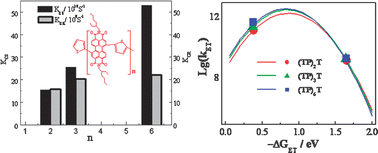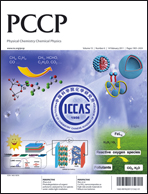A series of monodisperse oligomers consisting of alternating thiophene (T) and perylene bisimide (P), denoted as (TP)nT (n = 1, 2, 3, 6), were synthesized and photophysically characterized. The steady-state absorption and fluorescence spectra revealed that the low-energy P-derived band remains almost unchanged upon the increment of the number of the repeat unit n. This can be rationalized as a consequence of nearly orthogonal molecular geometry and highly-localized electron density at LUMO level based on DFT calculation. A drastic reduction of the fluorescence quantum yields (ΦF) of (TP)nT was observed with the sequence of (TP)6T > (TP)3T > (TP)2T > (TP)1T, as compared to the parent perylene bisimide. Further femtosecond transient absorption studies clarified that the quenching mechanism is intramolecular electron transfer, in which the generated P radical anion was spectrally recognized. The rate of charge separation was found to be on the order of 1011 s−1, suggesting an efficient electron transfer reaction between the thiophene and perylene units. Interestingly, the charge separation rate constant increased more than three times upon the increment of n, whereas the charge-recombination rate constant remained almost unchanged at (1.58–2.21) × 109 s−1. Analysis of the kinetic and thermodynamic data using the Marcus approach showed that the enhanced electronic coupling is the origin of the acceleration of electron-transfer reaction in the D–A copolymers.

You have access to this article
 Please wait while we load your content...
Something went wrong. Try again?
Please wait while we load your content...
Something went wrong. Try again?


 Please wait while we load your content...
Please wait while we load your content...